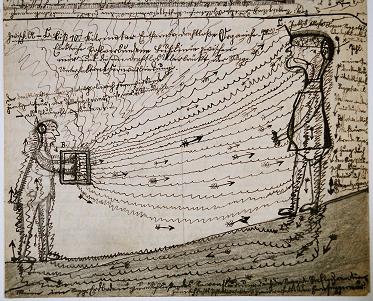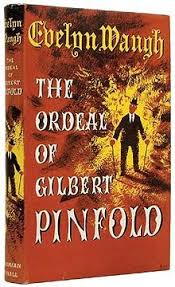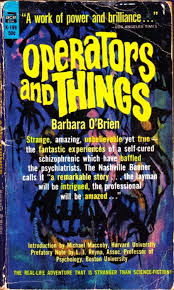Stranger than Fiction
Clinical psychiatry papers rarely make much of a media splash, but it was perhaps appropriate that a contribution to Cognitive Psychiatry’s May 2012 issue entitled The Truman Show Delusion: psychosis in the global village became a global sensation. Authors Joel and Ian Gold presented a striking series of cases in which individuals had become convinced that they were secretly being filmed for a reality TV show. In one case the subject travelled to New York, demanding to see the ‘director’ of the film of his life and wishing to check whether the World Trade Centre had been destroyed in reality or merely in the movie that was being assembled for his benefit. In another a journalist hospitalised during a manic episode played along with the medical staff, convinced that the hospital scenario was being faked and he would be awarded a prize for covering the story once the truth was revealed. Another subject was genuinely working on a reality TV series but came to believe that his fellow crew members were secretly filming him, and was constantly expecting the This-Is-Your-Life moment when the cameras would flip and reveal that he was the true star of the show.
Few commentators were able to resist the idea that these cases – all diagnosed as schizophrenia or bipolar disorder and treated with antipsychotic medication – were in some sense the tip of the iceberg, exposing a pathology in our culture as a whole. They were taken as extreme examples of a wider modern malaise: an obsession with celebrity turning us all into narcissistic stars of our own lives, or a media-saturated culture warping our sense of reality and blurring the line between fact and fiction. They seemed perfect examples of the zeitgeist: cautionary tales for an age in which our experience of reality is manicured and customized in subtle and insidious ways, and everything from our junk mail to our online searches discreetly encourages us in the assumption that we are the centre of the universe.
 But the reason the Truman Show delusion seems so uncannily in tune with the times is that Hollywood blockbuster movies now regularly present narratives that until recently were confined to psychiatrists’ case notes and the clinical literature on paranoid psychosis. Today’s popular culture hums with stories about technology that secretly observes and controls our thoughts, or in which reality is simulated with virtual constructs or implanted memories, and where the truth can be glimpsed only in distorted dream sequences or chance moments when the mask slips. Such beliefs were typically used to mark out fictional characters as crazy, more often than not as homicidal maniacs; now they are more likely to identify a protagonist who, like Jim Carrey’s Truman Burbank, has stumbled onto a carefully orchestrated secret of which those around him are blandly unaware. These stories obviously resonate with our technology-saturated modernity, but they do so by adopting a radically alienated perspective that until recently was a hallmark of estrangement from reality. Does this suggest that media technologies are making us all paranoid? Or that paranoid delusions suddenly make a whole lot more sense than they used to?
But the reason the Truman Show delusion seems so uncannily in tune with the times is that Hollywood blockbuster movies now regularly present narratives that until recently were confined to psychiatrists’ case notes and the clinical literature on paranoid psychosis. Today’s popular culture hums with stories about technology that secretly observes and controls our thoughts, or in which reality is simulated with virtual constructs or implanted memories, and where the truth can be glimpsed only in distorted dream sequences or chance moments when the mask slips. Such beliefs were typically used to mark out fictional characters as crazy, more often than not as homicidal maniacs; now they are more likely to identify a protagonist who, like Jim Carrey’s Truman Burbank, has stumbled onto a carefully orchestrated secret of which those around him are blandly unaware. These stories obviously resonate with our technology-saturated modernity, but they do so by adopting a radically alienated perspective that until recently was a hallmark of estrangement from reality. Does this suggest that media technologies are making us all paranoid? Or that paranoid delusions suddenly make a whole lot more sense than they used to?
The first person to examine the curiously symbiotic relationship between new technologies and the symptoms of psychosis was Victor Tausk, an early disciple of Sigmund Freud who in 1919 published a paper on a phenomenon he called ‘the influencing machine’. Tausk had noticed that it was common for patients with the recently-coined diagnosis of schizophrenia to be convinced that their minds and bodies were being controlled by advanced technologies invisible to everyone but them. These ‘influencing machines’ were often elaborately conceived and predicated on the new devices that were transforming modern life. Patients reported that they were receiving messages transmitted by hidden batteries, coils and electrical apparatus; voices in their heads were relayed by advanced forms of telephone or phonograph, and visual hallucinations by the covert operation of ‘a magic lantern or cinematograph’. Tausk’s most detailed case study was of a patient named ‘Natalija A.’ who believed her thoughts were being controlled and her body manipulated by an electrical apparatus secretly operated by doctors in Berlin. The device was in the shape of her own body, its stomach a velvet-lined lid that could be opened to reveal batteries corresponding to her internal organs.
 Although these beliefs were wildly delusional, Tausk detected a method in their madness: a reflection of the dreams and nightmares of a rapidly evolving world. Electric dynamos were flooding Europe’s cities with power and light, their branching networks echoing the filigree structures seen in laboratory slides of the human nervous system. The invisible worlds and mysterious powers of X-rays and radio were discussed excitedly in popular science journals, extrapolated in pulp fiction serials and claimed by spiritualists as the latest evidence for the ‘other side’. But all this novelty was not, in Tausk’s view, creating new forms of mental illness; rather, these discoveries were providing his patients with a new language to describe their condition. At the core of schizophrenia, he argued, was a ‘loss of ego-boundaries’ that made it impossible for subjects to impose their will on reality, or to form a coherent idea of the self. Without a will of their own, it seemed to them that the thoughts and words of others were being forced into their heads and issuing from their mouths, and their bodies being puppeted, subjected to tortures or arranged in mysterious postures. These experiences made no rational sense but those who suffered them were, like everyone else, subject to what Tausk called ‘the need for causality inherent in man’. They felt themselves at the mercy of malign external forces, and their unconscious minds fashioned an explanation from the material to hand, often with striking ingenuity. Unable to impose meaning on the world, they became empty vessels for the notions that swirled around them. By the early twentieth century there were many who found themselves gripped by the conviction that some hidden operator was tormenting them with advanced technology.
Although these beliefs were wildly delusional, Tausk detected a method in their madness: a reflection of the dreams and nightmares of a rapidly evolving world. Electric dynamos were flooding Europe’s cities with power and light, their branching networks echoing the filigree structures seen in laboratory slides of the human nervous system. The invisible worlds and mysterious powers of X-rays and radio were discussed excitedly in popular science journals, extrapolated in pulp fiction serials and claimed by spiritualists as the latest evidence for the ‘other side’. But all this novelty was not, in Tausk’s view, creating new forms of mental illness; rather, these discoveries were providing his patients with a new language to describe their condition. At the core of schizophrenia, he argued, was a ‘loss of ego-boundaries’ that made it impossible for subjects to impose their will on reality, or to form a coherent idea of the self. Without a will of their own, it seemed to them that the thoughts and words of others were being forced into their heads and issuing from their mouths, and their bodies being puppeted, subjected to tortures or arranged in mysterious postures. These experiences made no rational sense but those who suffered them were, like everyone else, subject to what Tausk called ‘the need for causality inherent in man’. They felt themselves at the mercy of malign external forces, and their unconscious minds fashioned an explanation from the material to hand, often with striking ingenuity. Unable to impose meaning on the world, they became empty vessels for the notions that swirled around them. By the early twentieth century there were many who found themselves gripped by the conviction that some hidden operator was tormenting them with advanced technology.
Tausk’s theory was radical in its implication that the utterances of psychosis were not random gibberish but an ingeniously assembled bricolage of cultural memes. Throughout history up to this point, the explanatory frame for such experiences had been essentially religious: they were seen as possession by evil spirits, divine visitations, witchcraft or snares of the devil. In the modern age these beliefs remained common, but alternative explanations were now available. The hallucinations experienced by psychotic patients, Tausk observed, are not typically three-dimensional objects but projections ‘seen on a single plane, on walls or windowpanes’. The new technology of cinema replicated this sensation precisely and was in many respects a rational explanation of it: it ‘does not reveal any error of judgement beyond the fact of its non-existence’.
 In their instinctive grasp of technology’s implicit powers and threats, influencing machines can be convincingly futuristic and even astonishingly prescient. The very first recorded case, from 1810, was a Bedlam inmate named James Tilly Matthews who drew exquisite technical drawings of the machine that was controlling his mind. The ‘Air Loom’, as he called it, used the advanced science of his day – artificial gases and mesmeric rays – to direct invisible currents into his brain, where a magnet had been implanted to receive them. Matthews’ world of electrically charged beams and currents, sheer lunacy to his contemporaries, is now part of our cultural furniture. A quick internet search reveals dozens of online communities devoted to discussing magnetic brain implants, both real and imagined.
In their instinctive grasp of technology’s implicit powers and threats, influencing machines can be convincingly futuristic and even astonishingly prescient. The very first recorded case, from 1810, was a Bedlam inmate named James Tilly Matthews who drew exquisite technical drawings of the machine that was controlling his mind. The ‘Air Loom’, as he called it, used the advanced science of his day – artificial gases and mesmeric rays – to direct invisible currents into his brain, where a magnet had been implanted to receive them. Matthews’ world of electrically charged beams and currents, sheer lunacy to his contemporaries, is now part of our cultural furniture. A quick internet search reveals dozens of online communities devoted to discussing magnetic brain implants, both real and imagined.
Joel and Ian Gold’s interpretation of the Truman Show delusion runs along similar lines: it may appear to be a new phenomenon that has emerged in response to our hypermodern media culture, but is in fact a familiar condition given a modern makeover. They make a distinction between the content of delusions, which is spectacularly varied and imaginative, and the basic forms of delusion, which they characterise as ‘both universal and rather small in number’. Persecutory delusions, for example, can be found throughout history and across cultures; but within this category a desert nomad is more likely to believe that he is being buried alive in sand by a djinn, and an urban American that he has been implanted with a microchip and is being monitored by the CIA. ‘For an illness that is often characterised as a break with reality’, they observe, ‘psychosis keeps remarkably up to date’. Rather than being estranged from the culture around them, psychotic subjects can be seen as consumed by it: unable to establish the boundaries of the self, they are at the mercy of their often heightened sensitivity to social threats.
In this interpretation, the Truman Show is a contemporary expression of a common form of delusion: the grandiose. Those experiencing the onset of psychosis often become convinced that the world has undergone a subtle shift, and they have been placed centre stage in a drama of universal proportions. Everything is suddenly pregnant with meaning, every tiny detail charged with personal significance. The people around you are often complicit: playing pre-assigned roles, testing you or preparing you for an imminent moment of revelation. This experience has typically been interpreted as a divine visitation, a magical transformation or an initiation into a higher level of reality; but it is easy to imagine that today, if it descended on us without warning, we could form the hypothesis that this was some contrivance of TV or social media: that, for some deliberately concealed reason, the attention of the world had suddenly focused on us, and an invisible public was watching with fascination to see how we would respond. The Truman Show delusion, then, doesn’t imply that reality TV is either a cause or a symptom of mental illness; it might simply be that the pervasive presence of reality TV in our culture offers a plausible explanation for otherwise inexplicable sensations and events.
 Although the formation of delusions is unconscious and often a response to profound trauma, the need to construct plausible scenarios gives it many commonalities with the process of writing fiction. On rare occasions the two overlap. In 1953 Evelyn Waugh suffered a psychotic episode during which he was persecuted by a cast of disembodied voices who were discussing his personality defects and spreading malicious rumours about him. He became convinced they were being orchestrated by the producers of a recent BBC radio interview whose questions he had found impertinent; he explained their ability to follow him wherever he went by invoking some hidden technology along the lines of a radionics ‘black box’, an enthusiasm of one of his neighbours. His delusions became increasingly florid but, as Waugh described it later, ‘it was not in the least like losing one’s reason…I was rationalising all the time, it was simply one’s reason working hard on the wrong premises’. His brilliant comic novel based on the experience, The Ordeal of Gilbert Pinfold, was nakedly autobiographical in its framing: its protagonist is a pompous but brittle author in late middle age whose paranoia about the modern world is fed by an escalating regime of liqueurs and sedatives until it erupts in full-blown persecution mania (a familiar companion for Waugh, who abbreviated it discreetly to ‘p.m.’ in letters to his wife). Although the novel smooths the edges of Waugh’s bizarre associations and winks knowingly at Pinfold’s surreal predicament, the fictionalization forms a continuum with the narrative that emerged during the psychosis: even for his close friends, it was impossible to tell exactly where the first ended and the second began.
Although the formation of delusions is unconscious and often a response to profound trauma, the need to construct plausible scenarios gives it many commonalities with the process of writing fiction. On rare occasions the two overlap. In 1953 Evelyn Waugh suffered a psychotic episode during which he was persecuted by a cast of disembodied voices who were discussing his personality defects and spreading malicious rumours about him. He became convinced they were being orchestrated by the producers of a recent BBC radio interview whose questions he had found impertinent; he explained their ability to follow him wherever he went by invoking some hidden technology along the lines of a radionics ‘black box’, an enthusiasm of one of his neighbours. His delusions became increasingly florid but, as Waugh described it later, ‘it was not in the least like losing one’s reason…I was rationalising all the time, it was simply one’s reason working hard on the wrong premises’. His brilliant comic novel based on the experience, The Ordeal of Gilbert Pinfold, was nakedly autobiographical in its framing: its protagonist is a pompous but brittle author in late middle age whose paranoia about the modern world is fed by an escalating regime of liqueurs and sedatives until it erupts in full-blown persecution mania (a familiar companion for Waugh, who abbreviated it discreetly to ‘p.m.’ in letters to his wife). Although the novel smooths the edges of Waugh’s bizarre associations and winks knowingly at Pinfold’s surreal predicament, the fictionalization forms a continuum with the narrative that emerged during the psychosis: even for his close friends, it was impossible to tell exactly where the first ended and the second began.
By the time that Waugh published Gilbert Pinfold in 1957, narratives of paranoia and psychosis were starting to bleed from psychiatry into popular culture. First-person memoirs of mental illness were appearing as mass-market
 paperbacks: the pseudonymous Barbara O’Brien’s Operators and Things: revelations of a schizophrenic (1958), which told the remarkable story of a young woman pursued across America on Greyhound buses by a shadowy gang of ‘operators’ with a mind-controlling ‘stroboscope’, was presented and packaged like a sci-fi thriller. Conversely, thrillers were incorporating plotlines that assumed the reality of mind-controlling technologies. Richard Condon’s The Manchurian Candidate, which became a bestseller on its publication in 1959, turned on the premise that a hypnotised subject might be programmed to respond unconsciously to pre-arranged cues: in the memorable and (with hindsight) eerily prescient climax of the novel, an unwitting agent is triggered to assassinate the US president. Condon’s deadpan satire was informed by Cold War anxieties about brainwashing and communist infiltration, but also by recent popular exposés of advertising’s ‘subliminal’ techniques such as Vance Packard’s The Hidden Persuaders (1958). It was expertly pitched into the disputed territory of psychology’s black arts: a paranoid tale for paranoid times, which still informs a thriving netherworld of internet-driven conspiracy theories.
paperbacks: the pseudonymous Barbara O’Brien’s Operators and Things: revelations of a schizophrenic (1958), which told the remarkable story of a young woman pursued across America on Greyhound buses by a shadowy gang of ‘operators’ with a mind-controlling ‘stroboscope’, was presented and packaged like a sci-fi thriller. Conversely, thrillers were incorporating plotlines that assumed the reality of mind-controlling technologies. Richard Condon’s The Manchurian Candidate, which became a bestseller on its publication in 1959, turned on the premise that a hypnotised subject might be programmed to respond unconsciously to pre-arranged cues: in the memorable and (with hindsight) eerily prescient climax of the novel, an unwitting agent is triggered to assassinate the US president. Condon’s deadpan satire was informed by Cold War anxieties about brainwashing and communist infiltration, but also by recent popular exposés of advertising’s ‘subliminal’ techniques such as Vance Packard’s The Hidden Persuaders (1958). It was expertly pitched into the disputed territory of psychology’s black arts: a paranoid tale for paranoid times, which still informs a thriving netherworld of internet-driven conspiracy theories.
 The emergence of the influencing machine into modern fiction can be most clearly traced through the career and afterlife of Philip K. Dick, who combined the profession of prolific hack novelist with an intense hypochondriacal fascination with psychotic disorders. He diagnosed himself both paranoid and schizophrenic at various times, and included schizophrenic characters in his fiction; many of his novels and short stories have a closer kinship with memoirs of mental illness than with the robots-and-spaceships tales of his sci-fi contemporaries. They play out restless iterations of the idea that consensus reality is in fact the construct of some form of influencing machine: a simulation designed to test our behavior, a set of memories generated artificially to maintain us in our daily routines, a consumer fantasy sold to us by power-hungry corporations or obligingly furnished by mind-reading extraterrestrials. In the same year as The Manchurian Candidate he published Time Out Of Joint, of which The Truman Show is a direct descendent. Its protagonist Ragle Gumm inhabits a bland suburban world which is gradually revealed to be a military simulation whose sole purpose is to keep him happily playing what he believes to be a battleship puzzle in the daily paper, while in reality his solutions are directing missile strikes in a war of which he is kept unaware.
The emergence of the influencing machine into modern fiction can be most clearly traced through the career and afterlife of Philip K. Dick, who combined the profession of prolific hack novelist with an intense hypochondriacal fascination with psychotic disorders. He diagnosed himself both paranoid and schizophrenic at various times, and included schizophrenic characters in his fiction; many of his novels and short stories have a closer kinship with memoirs of mental illness than with the robots-and-spaceships tales of his sci-fi contemporaries. They play out restless iterations of the idea that consensus reality is in fact the construct of some form of influencing machine: a simulation designed to test our behavior, a set of memories generated artificially to maintain us in our daily routines, a consumer fantasy sold to us by power-hungry corporations or obligingly furnished by mind-reading extraterrestrials. In the same year as The Manchurian Candidate he published Time Out Of Joint, of which The Truman Show is a direct descendent. Its protagonist Ragle Gumm inhabits a bland suburban world which is gradually revealed to be a military simulation whose sole purpose is to keep him happily playing what he believes to be a battleship puzzle in the daily paper, while in reality his solutions are directing missile strikes in a war of which he is kept unaware.
Throughout his lifetime Dick remained a cult author, with a devoted but limited fanbase who prized his work for its uncompromising weirdness and never imagined that it might be assimilated into the popular mainstream. Indeed, after a series of visionary episodes in 1974 which he elaborated into a complex personal theology, his work became still more hermetic and less accessible even to his core sci-fi readership. He died just as his novel Do Androids Dream of Electric Sheep? was being adapted into Ridley Scott’s Bladerunner, its storyline soft-pedalled by a studio who believed audiences would be alienated by the suggestion that its protagonist was himself an android. Subsequent film adaptations of his work, such as 1990’s Total Recall, also pared back the radical reality switches of their source material, limiting them to the opening set-up before settling into a final act of uncomplicated action.
In 1999, however, The Matrix struck box-office gold with a script that presented a classic Dickian influencing machine in stark and undiluted form. An inquisitive solo hacker stumbles onto the ultimate secret: the so-called ‘real world’ is in  fact a simulation, concealing a reality in which all humanity has for centuries been enslaved and harvested by machines.
fact a simulation, concealing a reality in which all humanity has for centuries been enslaved and harvested by machines.
Buttressed by reams of dialogue exploring the existential questions raised by this scenario, this was precisely what Hollywood executives had assumed audiences hated – filmmakers playing smart with their audiences, pulling the narrative rug from under their feet and even toying with the fourth wall of the drama – but it was a sensational success, resonating far beyond the multiplex and into the wider culture now hosted by the internet.
As William Goldman observed of the movies, nobody knows anything, and it may be that a similarly bold metafiction could have been successful years earlier. But it seems more likely that The Matrix’s cultural moment reflected the ubiquity that interactive and digital media had achieved by the end of the twentieth century. This was the point at which the networked society reached critical mass: the futuristic ideas that a decade before had been the preserve of a vanguard who read William Gibson’s cyberspace novels or followed the bleeding-edge speculations of Mondo 2000 had now become part of the texture of daily life for a global and digital generation. The headspinning pretzel logic that had limited Philip K. Dick’s appeal to the cult fringes a generation earlier was now accessible to a mass audience with an appetite for convoluted allegories that dissolved the boundaries between the virtual and the real.
When James Tilly Matthews drew the invisible beams and rays of the Air Loom in his Bedlam cell, he was describing a world that existed only in his head. But his world is now ours: we can no longer even count the invisible rays, beams and signals that are passing through our bodies at any moment. Victor Tausk argued that the influencing machine emerges ultimately from a confusion between the outside world and private mental events, which is resolved by inserting an external cause to make sense of thoughts, dreams and hallucinations. But the modern word of television and computers, the virtual and the interactive, blurs traditional distinctions between perception and reality, constantly merging what ![]() we have actually experienced with what we have only observed. When we watch live sporting events on giant public screens or follow breaking news stories in our living rooms we are only receiving flickering images, yet our hearts beat in sync with millions of unseen others. We Skype with two-dimensional facsimiles of our friends, and model idealised versions of ourselves for our social profiles. Avatars and aliases allow us to commune intimately and anonymous at the same time; multiplayer games and online worlds allow us to create customised realities as all-embracing as The Truman Show. News scoops, leaks and exposés continually undermine our assumptions about what we are revealing and to whom, how far our actions are being monitored and our thoughts being transmitted. We manipulate our identities and are manipulated by unknown others; we cannot reliably distinguish the real from the fake, or the private from the public.
we have actually experienced with what we have only observed. When we watch live sporting events on giant public screens or follow breaking news stories in our living rooms we are only receiving flickering images, yet our hearts beat in sync with millions of unseen others. We Skype with two-dimensional facsimiles of our friends, and model idealised versions of ourselves for our social profiles. Avatars and aliases allow us to commune intimately and anonymous at the same time; multiplayer games and online worlds allow us to create customised realities as all-embracing as The Truman Show. News scoops, leaks and exposés continually undermine our assumptions about what we are revealing and to whom, how far our actions are being monitored and our thoughts being transmitted. We manipulate our identities and are manipulated by unknown others; we cannot reliably distinguish the real from the fake, or the private from the public.
In the twenty-first century the influencing machine has escaped from the shuttered wards of the mental hospital to become a distinctive myth for our times. It is compelling not because we have all become schizophrenics, but because reality has become a grey scale between the external world and our imaginations: mediated partly by technologies that fabricate it and partly by our own minds, whose pattern-recognition routines work constantly behind the scenes to assemble the private cinema of our consciousness. The classical myths of metamorphosis explored the boundaries between humanity and nature and our relationship to the animals and the gods. These fantastical technologies that were once the hallmarks of insanity have become our modern myths, enabling us to articulate the possibilities, threats and limits of the tools that are extending our minds into unfamiliar dimensions.
A version of this article first appeared in Aeon Magazine in 2013
Cover image from Zoe Beloff’s interactive installation, The Influencing Machine of Miss Natalija A.
RELATED BOOK: The Influencing Machine